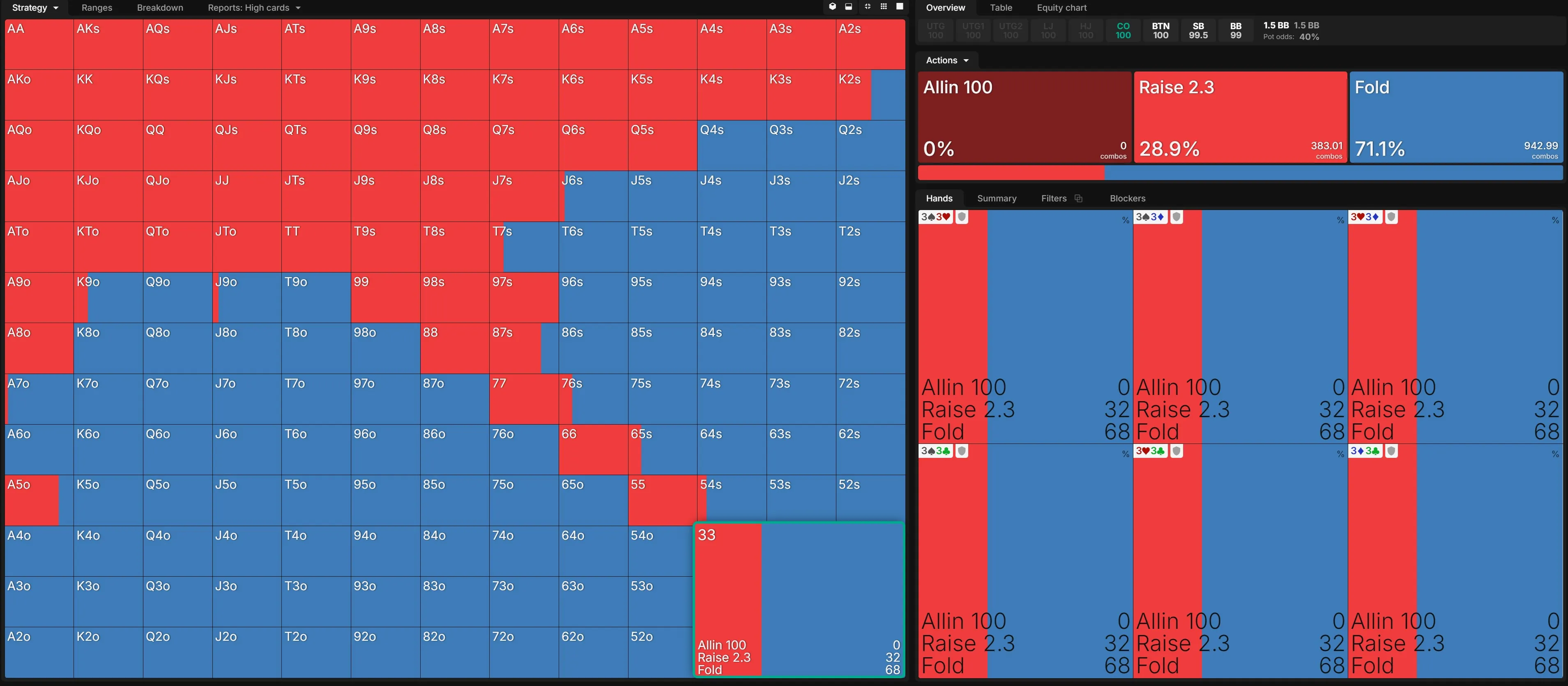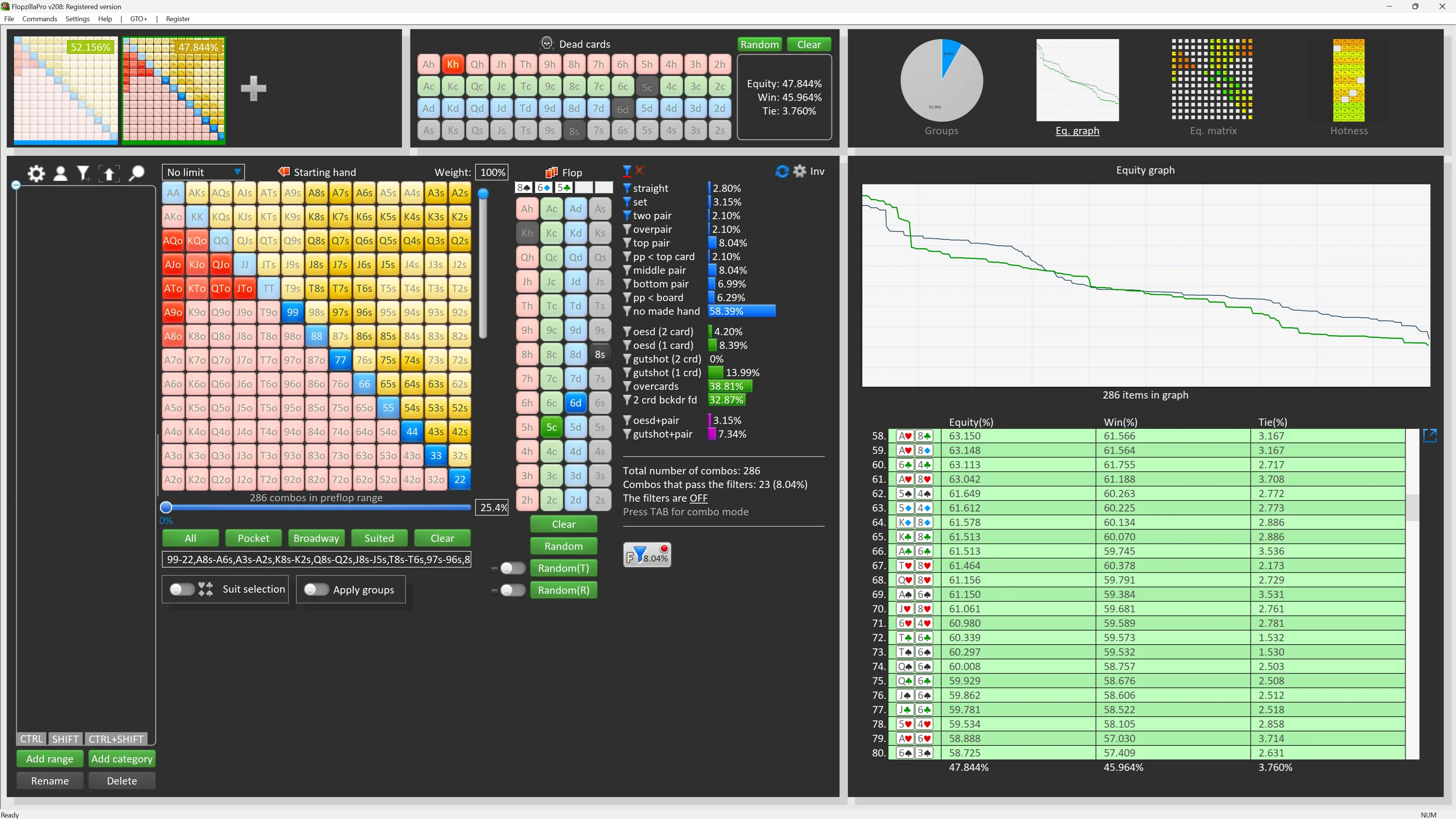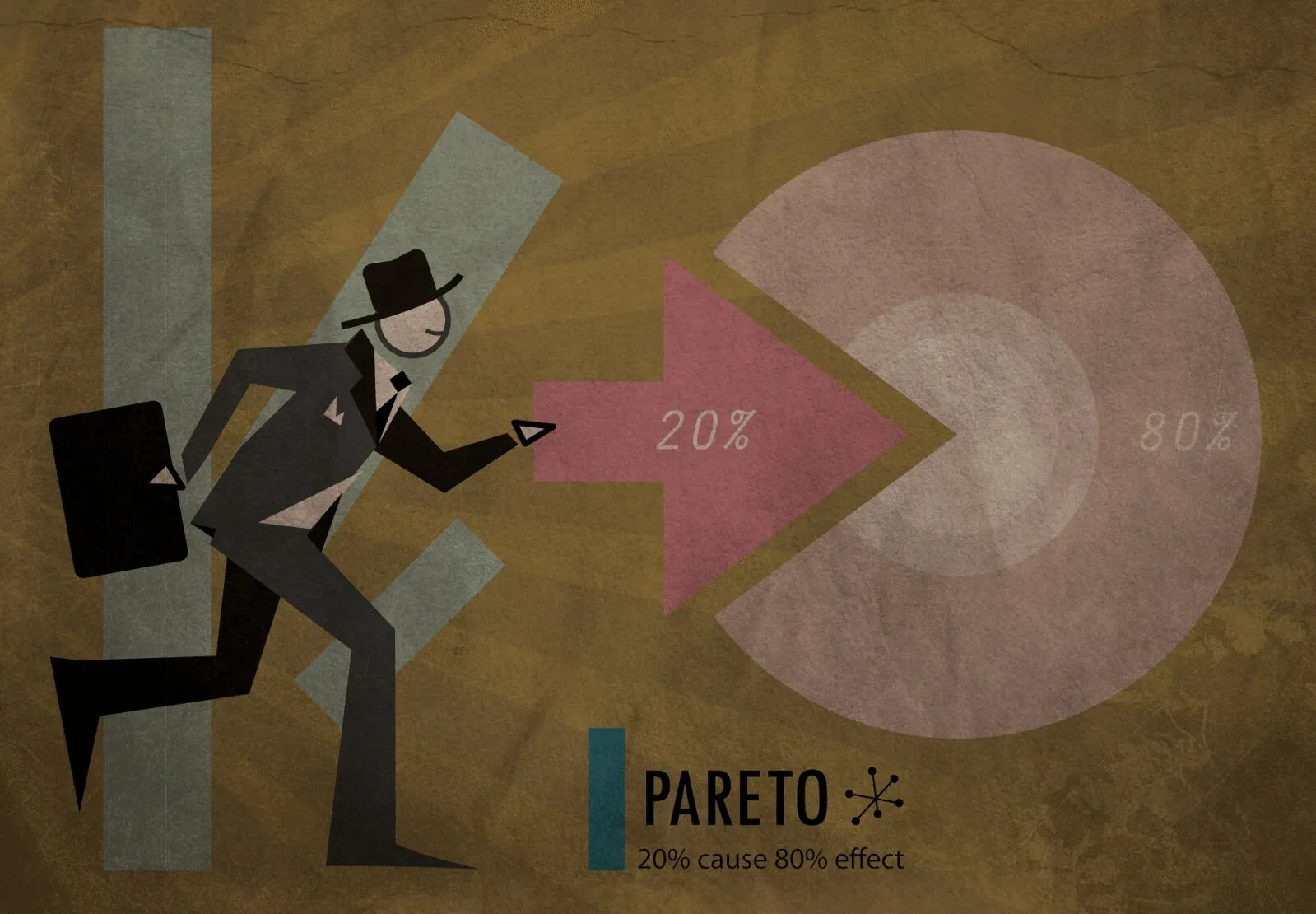Consistent Strategy Over a Large Sample

Mar 21, 2025
•
2 min read
The best players are able to adjust according to how their opponents are playing. This is really where their edge comes.
- Doug Polk
Previously, we discussed how profit in cards comes from capitalizing on strategic errors in our opponents. We understand a mathematically defined, “unbeatable,” equilibrium poker strategy exists, and we can glimpse at a close approximation through GTO solver outputs.
So how can someone use this to become a long-term winner in actual online poker games? Do you need to get pricey software and spend countless hours studying graphs and charts? Well, here you’ll learn how simplicity and, more crucially, consistency will allow you to craft your own winning style.
How Do You Win Consistently in Poker?
Before solvers and the GTO trend, beginners often focused on strategies to exploit common mistakes made by opponents, like calling too much instead of folding. The goal was simple: value-betting (placing bets when you’re likely to have the best hand). But to understand poker deeply, let's start with the big picture.
Each hand of Texas Hold'em begins with one of 1,326 possible hole-card combinations, grouped into 169 unique starting hands. For example, there are four ways to get a suited hand like AKs, twelve ways to get an off-suit version, and six ways to get a pocket pair like 77.
From here, some hands advance beyond the preflop round to see one of 22,100 possible flops - though only 1,755 of them matter strategically (e.g.,
To win consistently in poker, focus on making strategic decisions based on GTO play, exploit opponents' weaknesses, and adapt to different scenarios at each stage of the hand.
"Ok… but how?" you may wonder. The answer: With a solver. A poker solver uses GTO strategy to decide what to do with each of those 169 starting hands, from preflop to flop, turn, and river.
Think of each decision as a branch on a tree. The first branch is whether to enter the pot or fold. From there, the branches multiply as new cards are revealed. Hand charts guide us through the best moves at each decision point. The result is a complex, balanced strategy created by the solver.
Mixed Strategies
Sometimes in GTO land, a hand like a straight-draw might check 42% of the time and bet 58% of the time on a given flop. Sometimes a pocket-pair open raises 32% of the time and folds the rest.

This weirdness is a result of an unexploitable strategy requiring unpredictability, like always randomly drawing in rock-paper-scissors.
So how can a seemingly infinite collection of GTO charts with bizarre mixed actions influence a poker strategy for beginners?
Poker Strategy Tips for Beginners
Poker strategy is an ongoing process of learning and adapting. The best players constantly improve their skills, even when they’re not at the table.
Pure Strategy
You're playing against humans, not computers. Most of your profit will come from opponents who make mistakes, so keeping things simple often leads to success.
You can always make changes and add more nuance as you progress. Start by focusing on the most common situations first. The more often you encounter a specific decision point (or node in the game tree), the more that decision affects your win rate.
Naturally, you’ll find yourself in preflop situations more often than on the flop, turn, or river.
Pre-Flop
Start with a simple preflop strategy before worrying about anything else. There are plenty of free GTO preflop charts available. Some hands might suggest mixed actions, but for now, keep it straightforward.
If a hand folds 75% of the time and raises 25%, just fold every time. Use these GTO charts to build your own preflop plan, covering everything from raising first-in to 3-betting and 4-betting, and how to respond to these actions.
There are also apps and websites that can help you practice and memorize these ranges! For now, stick to your pure strategy without overthinking or second-guessing it.
Don’t worry about being exploited. If you're using GTO charts, you're already playing like the top players. Getting confident with preflop decisions comes with practice. It might take a day or two to set up your charts, but after that, it’s just about memorizing them, like all serious players do.
The fun starts on the flop. Here, you'll often face continuation bets or need to respond to them. Your decision depends on two factors: range advantage and nut advantage.
Range and Nut Advantage
- Range advantage means your set of possible hands (your "range") has more combined equity than your opponent's range.
- Nut advantage means one range has more combinations of top tier hands, like 2 pair or better than the other, or perhaps a larger portion of one range has those nutted hands in it compared to the other.
While nut and range advantages usually go together, it’s not always the case. On a low connected flop, like 865, a preflop raiser might have more equity from all of their over pairs like 99+, while a big-blind defender might have more flopped straights.

So how does this help one form a pure flop strategy?
Getting the Flop Simple
Start by identifying flops that work well for your range and those that don't. When your range has a strong advantage, you can c-bet (continuation bet) almost every time.
You might have heard the term “range-bet” - this just means betting with every hand in your range.
Now, think about flops that aren’t great for your range. Set a rule for how much equity you need to make a c-bet on these flops. For example, you might only bet with Top-Pair, good kicker, or better hands, along with your best draws on bad flops.
The key is to spend time with an equity calculator, range visualizer, or even a solver to learn how different ranges interact with various flops. Doing this off-table work will give you an edge over weaker players.
Once you’ve done the work, you should know which flops you’ll always c-bet and which ones you'll only bet with strong hands and draws. Execute this strategy with the same confidence you use for your preflop decisions.
This might take time to master, but here’s a quick tip for playing confidently right now: organize your hands into three categories - value hands, bluff-catchers, and bluffs.
Strategy by Hand Strength
Value wants to get stacks in, bluff-catchers can play for a bet or two, bluffs need to blast the other hands away. Play accordingly. What’s the best way to ensure stacks do NOT go in and opponents bluff when you have bluff-catchers? Probably checking.
What flop action ensures you max out on value and give your opponent as many options to fold as possible when bluffing? Likely betting!
At the end of the day, once you’ve done some off-table work to know what you’re going to do at a common node in the game-tree, always do that action. Why? To get a baseline win-rate on your strategy.
We’ll get to the specifics later in the course, but as a profit driven player, you’re logging your hand histories and the software you use to organize them allows you to filter for results at every possible node.
Consistency & Evaluation
When you consistently make the same decision, you can precisely measure its addition or detraction from your win-rate. That is how profitable styles of play emerge. Do the thing you think is best. Once you have a large sample size (thousands or even tens of thousands of hands), confirm.
You’ll change and/or add nuance to your poker strategy based on hard evidence. By focusing on the common situations, you’ll get to profit sooner rather than later. After you’ve worked out plans for the flop, you can move on to turn and river situations.
It's not all about talent. It's about dependability, consistency, and being able to improve.
- Bill Belichick
…And keep the 80/20 Pareto Principle in mind.
”What is the 80 20 rule in poker?” A simple observation, that 80% of your profits likely come from 20% of the player-pool, that is fish. Exploit them. Mark hands against them to study. They use transparent strategies ripe for exploitation.
80/20 Rule in Poker

A great starting point when first forming your post-flop poker strategy would be knowing how you’re going to value-bet against fish. What sorts of hands do you think beat a fish if you get all the money in?
Use an equity calculator to compare your range vs what you think a fish might play (wider than optimal) on different flop types, like Ace high, dry flops, wet flops. Set a strategy in place and execute it relentlessly.
Future chapters will cover how to gauge its success and add improvements.
In closing, a winning poker strategy is a work in progress.
Conclusion
Beginners have plenty of tools to start building their poker strategy. GTO preflop charts are a great foundation for creating simple preflop strategies. When it comes to post-flop play, stick to the basics. Focus on common situations like continuation betting and learn how to play different hands based on range and nut advantage.
The key is to consistently apply your strategy over thousands of hands. This repetition allows you to measure the effectiveness of your decisions using tracking software. When you try different approaches, you'll have a solid baseline for comparison.
There are no shortcuts. Even if you memorized all GTO solver outputs, you wouldn’t make money without understanding how to exploit your opponents. Experience will help you identify areas for exploitation, and measuring your results will guide your adjustments.
Stay tuned for our upcoming Hand History Review and Poker Tool articles, where we'll dive deeper into refining your +EV poker strategy.
ZOOM IN
The following links are recommended resources related to this section’s theme. Don’t stay in doubt - dive in! 🔔
- Solvers: You may want to check Pio SOLVER & ICMIZER.
- Ranges: Learn how to calculate & use poker ranges.
- Betting: Learn more about how to bet in poker.
- MDF: Learn how to use the minimum defense frequency in poker.
- Discord Community: Join the coolest poker community, don’t be shy! Use it to ask questions and interact with other poker enthusiasts and professionals.